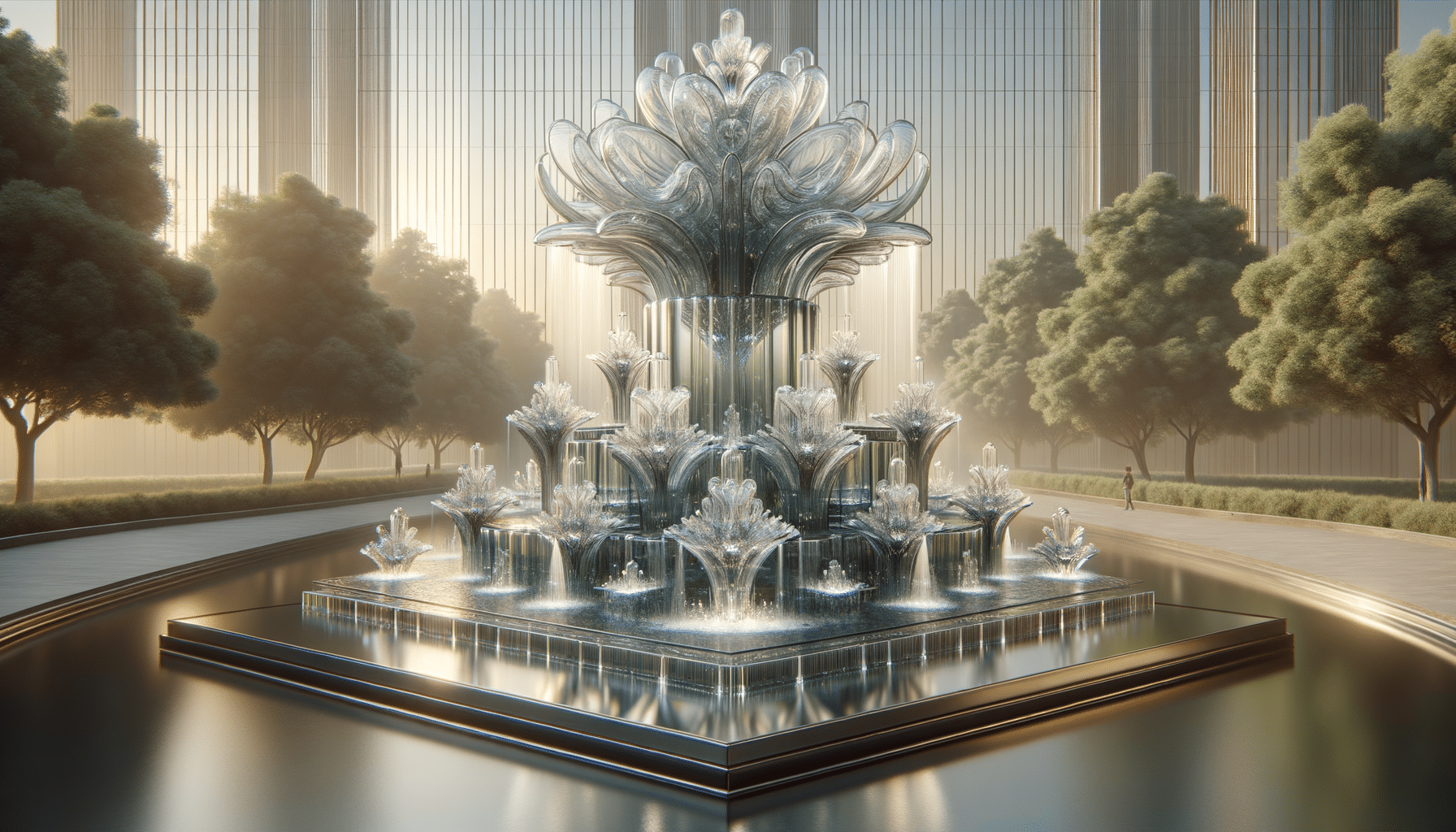The Allure and Innovation of Glass Fountains
Exploring the captivating design and functionality of glass fountains, from their artistic appeal to their environmental benefits.

Introduction to Glass Fountains
In the realm of modern design and architecture, glass fountains have emerged as a captivating element that combines functionality with aesthetic appeal. These structures, often found in public spaces, gardens, and even private residences, offer a unique blend of elegance and innovation. The allure of glass fountains lies not only in their visual beauty but also in their ability to transform spaces into serene and dynamic environments. This article delves into the various aspects of glass fountains, highlighting their importance and the role they play in contemporary design.
The Artistic Appeal of Glass Fountains
Glass fountains are renowned for their artistic appeal, often serving as the centerpiece of the spaces they inhabit. The transparency and reflective qualities of glass allow these fountains to interact with light in a way that creates mesmerizing visual effects. When sunlight or artificial lighting hits the surface of a glass fountain, it refracts and reflects, casting intricate patterns and colors that can change throughout the day. This dynamic interaction with light makes glass fountains a popular choice for designers looking to add a touch of elegance and sophistication to their projects.
Moreover, glass fountains can be crafted in various shapes and sizes, offering endless possibilities for customization. Designers often collaborate with artists to create unique pieces that reflect specific themes or complement the surrounding architecture. The versatility of glass as a material allows for intricate designs that can range from minimalist and modern to elaborate and ornate. This adaptability makes glass fountains suitable for a wide range of settings, from urban landscapes to tranquil garden retreats.
Innovative Technology in Glass Fountain Design
Beyond their aesthetic appeal, glass fountains also incorporate innovative technology that enhances their functionality. Modern glass fountains often feature advanced water circulation systems that ensure efficient water use and minimal maintenance. These systems are designed to recycle water, reducing waste and promoting sustainability. Additionally, many glass fountains are equipped with LED lighting systems that can be programmed to change colors and patterns, adding an interactive element to the installation.
Some glass fountains also integrate sound technology, using underwater speakers to create soothing soundscapes that enhance the overall sensory experience. This combination of visual and auditory elements transforms glass fountains into immersive installations that engage multiple senses. As technology continues to evolve, the possibilities for innovation in glass fountain design are expanding, offering exciting opportunities for designers and architects to push the boundaries of creativity.
Environmental Benefits of Glass Fountains
In addition to their artistic and technological features, glass fountains offer several environmental benefits. The use of recycled glass in fountain construction is becoming increasingly common, aligning with the growing emphasis on sustainable design practices. Recycled glass not only reduces the demand for new raw materials but also minimizes waste, making it an eco-friendly choice for environmentally conscious projects.
Furthermore, the water circulation systems used in glass fountains are designed to be energy-efficient, reducing the overall carbon footprint of the installation. By utilizing energy-saving pumps and lighting systems, glass fountains can operate with minimal environmental impact. These sustainable practices make glass fountains an attractive option for projects aiming to achieve green building certifications or adhere to environmental standards.
Conclusion: The Timeless Appeal of Glass Fountains
Glass fountains represent a harmonious blend of art, technology, and sustainability, making them a standout feature in modern design. Their ability to enhance spaces with their visual and sensory appeal, coupled with their environmental benefits, ensures their continued popularity in both public and private settings. As designers and architects continue to explore new possibilities in glass fountain design, these captivating structures will undoubtedly remain a symbol of innovation and elegance for years to come.